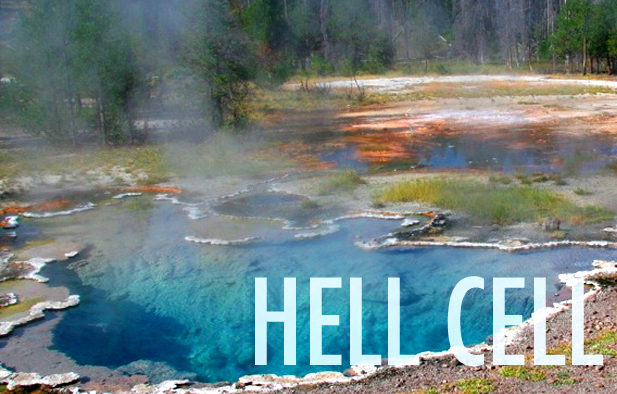Team:Stanford-Brown/HellCell/Introduction
From 2012.igem.org
| Line 3: | Line 3: | ||
<div id="subHeader"> | <div id="subHeader"> | ||
<ul id="subHeaderList"> | <ul id="subHeaderList"> | ||
| - | <li><a href="/Team:Stanford-Brown/ | + | <li><a href="/Team:Stanford-Brown/HellCell/Introduction" id="project">Hell Cell:</a></li> |
| - | <li id="active"><a href="#" id="current"> | + | <li id="active"><a href="#" id="current">Introduction</a></li> |
| - | <li><a href=" | + | <li><a href="/Team:Stanford-Brown/HellCell/Plasmid">Test Plasmid</a></li> |
| - | <li><a href="/Team:Stanford-Brown/ | + | <li><a href="/Team:Stanford-Brown/HellCell/Cold">Cold</a></li> |
| - | <li><a href="/Team:Stanford-Brown/ | + | <li><a href="/Team:Stanford-Brown/HellCell/Desiccation"> Desiccation </a></li> |
| - | <li><a href="/Team:Stanford-Brown/ | + | <li><a href="/Team:Stanford-Brown/HellCell/Radiation">Radiation</a></li> |
| + | <li><a href="/Team:Stanford-Brown/HellCell/pH">pH</a></li> | ||
| + | <li><a href="/Team:Stanford-Brown/Parts">BioBricks</a></li> | ||
| + | <li><a href="https://docs.google.com/document/d/1Pe9voM2l_nrVJk0hwzJ6z6tCCMn9ckykVNX5nLZ8qGg/edit">Lab Notebook</a></li> | ||
| + | <li><a href="/Team:Stanford-Brown/Protocols">Protocols</a></li> | ||
</ul> | </ul> | ||
</div> | </div> | ||
| Line 14: | Line 18: | ||
{{:Team:Stanford-Brown/Templates/Content}} | {{:Team:Stanford-Brown/Templates/Content}} | ||
| - | |||
| - | + | == '''Introduction''' == | |
| - | + | What is the scope of life on Earth and what are its limits? Is it possible for earthly life to survive the harsh conditions of space and other planets? Frigid cold, blasting radiation, withering desiccation, and corrosive pH are just a few of the extremes that would have to face. Does such a resilient life form exist? | |
| + | These are the questions that the synthetic astrobiologists of the Hell Cell squad examined. Taking inspiration from the myriad extremophilic wonders of this Earth, we investigated what is essential to their endurance and which genes can be mapped to these qualities. Armed with this information, we have attempted to create genes that can be used in synergy to custom-engineer extremophilic ''Escherichia coli''. This attempt was meant to be a first step in standardizing BioBricks for such astrobiological purposes, and the aim was to produce a robust “toolbox” of resistance-conferring genes. | ||
| - | + | [[File:HellCell.png|right|300px]] | |
| - | + | '''So what did we do?''' | |
| + | * Successfully isolated and tested five parts from various organisms, for base and desiccation resistance, into our toolbox! These two parts were characterized and were submitted for future use to the Registry of Standard Biological Parts! | ||
| + | * Successfully isolated four parts from various organisms for radiation and cold resistance that require further testing. These have been submitted to the Registry of Standard Biological Parts as well! | ||
| + | * Isolated two parts from ''Deinococcus radiodurans'' for radiation resistance that have been deposited and we are working on their characterization! | ||
| - | + | Sources: | |
| - | + | Scalice, D. (2012). About Astrobiology. In Astrobiology: Life in the Universe. Retrieved from https://astrobiology.nasa.gov/ | |
| - | + | ||
| - | + | ||
| - | + | ||
| - | + | ||
| - | + | ||
| - | + | ||
| - | + | ||
| - | + | ||
| - | + | ||
| - | + | ||
| - | + | ||
| - | + | ||
| - | + | ||
| - | + | ||
| - | + | ||
| - | + | ||
| - | + | ||
| - | + | ||
| - | + | ||
| - | + | ||
| - | + | ||
| - | + | ||
| - | + | ||
| - | + | ||
| - | + | ||
| - | + | ||
| - | + | ||
| - | + | ||
| - | + | ||
| - | + | ||
| - | + | ||
| - | + | ||
| - | + | ||
| - | + | ||
Latest revision as of 08:50, 27 November 2012
Introduction
What is the scope of life on Earth and what are its limits? Is it possible for earthly life to survive the harsh conditions of space and other planets? Frigid cold, blasting radiation, withering desiccation, and corrosive pH are just a few of the extremes that would have to face. Does such a resilient life form exist? These are the questions that the synthetic astrobiologists of the Hell Cell squad examined. Taking inspiration from the myriad extremophilic wonders of this Earth, we investigated what is essential to their endurance and which genes can be mapped to these qualities. Armed with this information, we have attempted to create genes that can be used in synergy to custom-engineer extremophilic Escherichia coli. This attempt was meant to be a first step in standardizing BioBricks for such astrobiological purposes, and the aim was to produce a robust “toolbox” of resistance-conferring genes.
So what did we do?
- Successfully isolated and tested five parts from various organisms, for base and desiccation resistance, into our toolbox! These two parts were characterized and were submitted for future use to the Registry of Standard Biological Parts!
- Successfully isolated four parts from various organisms for radiation and cold resistance that require further testing. These have been submitted to the Registry of Standard Biological Parts as well!
- Isolated two parts from Deinococcus radiodurans for radiation resistance that have been deposited and we are working on their characterization!
Sources: Scalice, D. (2012). About Astrobiology. In Astrobiology: Life in the Universe. Retrieved from https://astrobiology.nasa.gov/
 "
"
